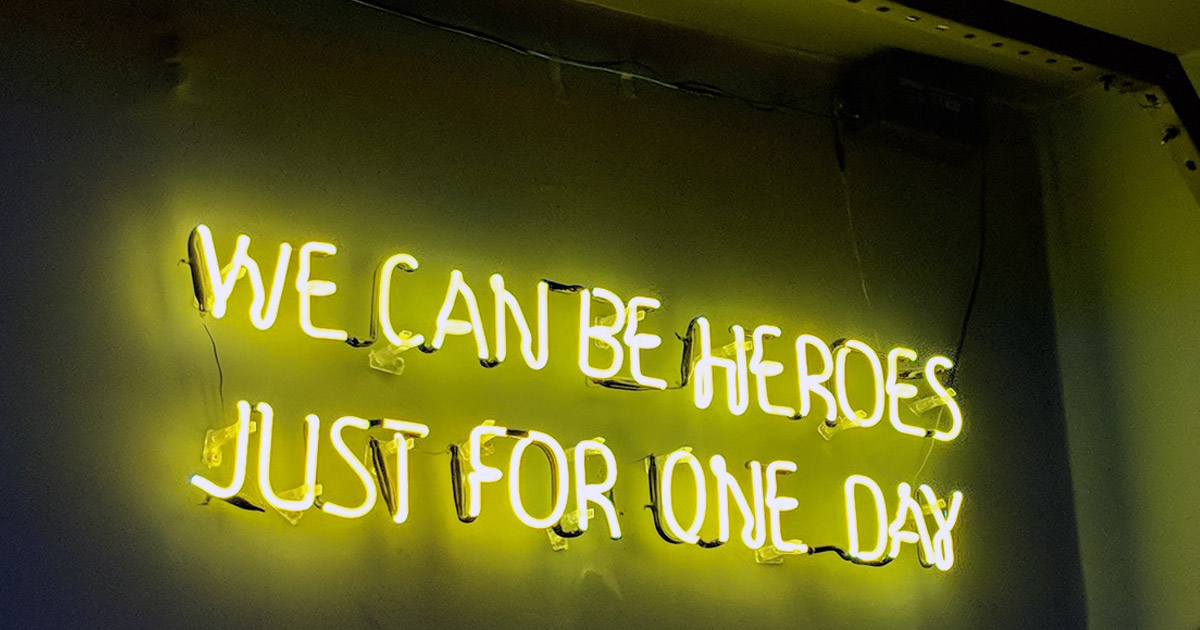Last summer, my line manager asked me how much writing I’d been doing. Now, there’s nothing strange there – I’m employed as a B2B copywriter after all.
But he wasn’t checking on my productivity as a key business resource. He was checking that I was writing in my spare time – like I used to, before I started writing for a living.
I said, “Well, no, not as much as I’d like.”
And he said, “Is there anything the company can do to help?”
(Let’s gloss over, for now at least, what a rare and wonderful employer Radix is.) A few months later, the Radix Sabbatical scheme was announced:
- For every five years with Radix, every employee may take up to three months off to pursue their own interests, on half their monthly salary.
I took my own three months earlier this year. I spent some time in Canada, some in London, and some writing narrative-driven songs in a semi-derelict warehouse on the edge of town.
The benefit to me is clear. But what’s in it for Radix? Why would any creative agency – copywriting or full-service – pay its writers not to come to work? Well, since you ask…
It’s a chance to build loyalty
At Radix, most of us are either copywriters or account managers. But we’re also record reviewers. Podcast creators. Local political party secretaries. YA authors. Jewellers. Semi-professional drinkers. Parents. Coders. International martial arts champions.
For my part, I write songs. I write short fiction. I set the occasional cryptic crossword.
We’re all committed to our jobs, but we’re committed to other things too.
I’m touched that Radix recognises this. And I suspect it’s one of the reasons we’ve only seen a single member of staff leave in our ten-year history.
Here’s my hypothesis – if your business supports its staff in what they want to achieve, they’ll be less likely to just show up for the pay check. They’ll want to support your business back.
And in time you’ll end up with a team of multi-talented people whose individual expertise you can draw on in unexpected ways. You’ll be planning your business’s new podcast, and suddenly realise you’ve the sound-editing skills you need, right there in-house. Or you’ll be looking for new content ideas, and realise you can confidently pitch a TOFU video game.
It’s a chance to improve mental health and productivity
A little while ago, while out on my lunchbreak in Penryn, I bought Zen in the Art of Writing from a local charity shop. I have little time for books on writing, but this one was 50p, and the cover was gloriously lurid, and I have a lot of time for Ray Bradbury.
In his preface, he discusses the profound impact writing – and not writing – can have on a writer’s well-being:
“Not to write, for many of us, is to die. […] If you did not write every day, the poisons would accumulate and you would begin to die, or act crazy, or both. You must stay drunk on writing so reality cannot destroy you […] For writing allows just the proper recipes of truth, life, reality as you are able to eat, drink, and digest without hyperventilating and flopping like a dead fish in your bed.”
I’m lucky to be able to use my writing skills to earn a living. But the writing Bradbury is talking about is self-directed writing. Writing as exploration and analysis. As adventure and escape. The kind of writing Matt was asking me about back at the beginning of this post. And I’m personally very aware of how essential this writing is to my own mental health.
When I have the time and headspace to do it, I’m calmer. I’m more focused. I’m less likely to hyperventilate or flop like a dead fish in my bed. I’m an infinitely better employee.
The Radix Sabbatical gave me a chance to put my own writing back in motion. I’m now a few weeks from completing Mizzle, the first record by my new song-writing project, Cirrhosis of the Zither. I’m also calmer and more focused than I have been in years.
It’s a chance to develop skills
The top floor of the museum of Newfoundland and Labrador is a masterclass in how to respond to a creative brief. I went to the museum in the first month of my sabbatical, judging it to be one of the few tourist attractions in St John’s that wouldn’t be diminished by the ever-present maritime fog.
Climb all the way to the top with, in all likelihood, very little risk of getting distracted by the views, and you’ll find the permanent exhibition Here, we made a home. You’ll learn about the various indigenous cultures of the two ancient islands, and the waves of immigration that have crashed hopefully onto their shores.
And if you’re a writer, you’ll likely be struck by just how intelligently, sensitively, and plain successfully the story is told.
You see, if I’d received this exhibition as a copywriting project, my heart would have sunk through the floor.
Multiple, deeply invested stakeholders? Conflicting perspectives on the messaging? An audience of genuinely anyone? I’d have been steeling myself to do 14 rounds of amends, then watch the project quietly vanish into the black hole that allegedly swallows up at least 60% of B2B marketing content.
But someone’s safely helmed this exhibition all the way to completion. And it’s wonderful. A tour-de-force in careful, optimistic, collective identity building, giving each culture space and attention, and presenting the downsides and upsides of multiculturalism with even, open hands.
Part of its success is due to its design – from the neat way the culture each artefact belongs to is indicated by the colour of its placard, to the walls of video interviews with each culture’s present-day descendants.
But much of the exhibition’s success is due to its use of language. The first-person plural flows throughout the diverse exhibits – at one turn, the word “we” unites an indigenous people, asserting their own, individual heritage; at the next, it unites all the cultures in the province.
It’s a beautiful solution to the challenge of articulating the area’s complex history. The top floor of the museum of Newfoundland and Labrador speaks with many voices, and yet it speaks with one.
All of which is to say – you can learn to do your job better, even when you’re not at work.
Finally, a word to the cynics
Some may still mutter, “That’s all very well, but really – how can any business justify paying its staff even half their salary when they’re not actually there to help it make a profit?”
To such doubters, I would say this. Sure, Radix likes to make a profit. But our priorities are – and always have been – threefold. We also want to create good jobs, and do brilliant work.
These priorities benefit our team. But crucially, they also benefit our clients.
Given the choice between a frustrated, anxious, empty copywriter, and a happy, calm, inspired one, I know who I’d want to write for my business.
Want to stay up-to-date with the Radix blog? We’ve got a monthly copy insights email. Sign up here.
Ed. note: The pic used in this post is from Muddy Beach, Penryn, not the middle of Newfoundland.



